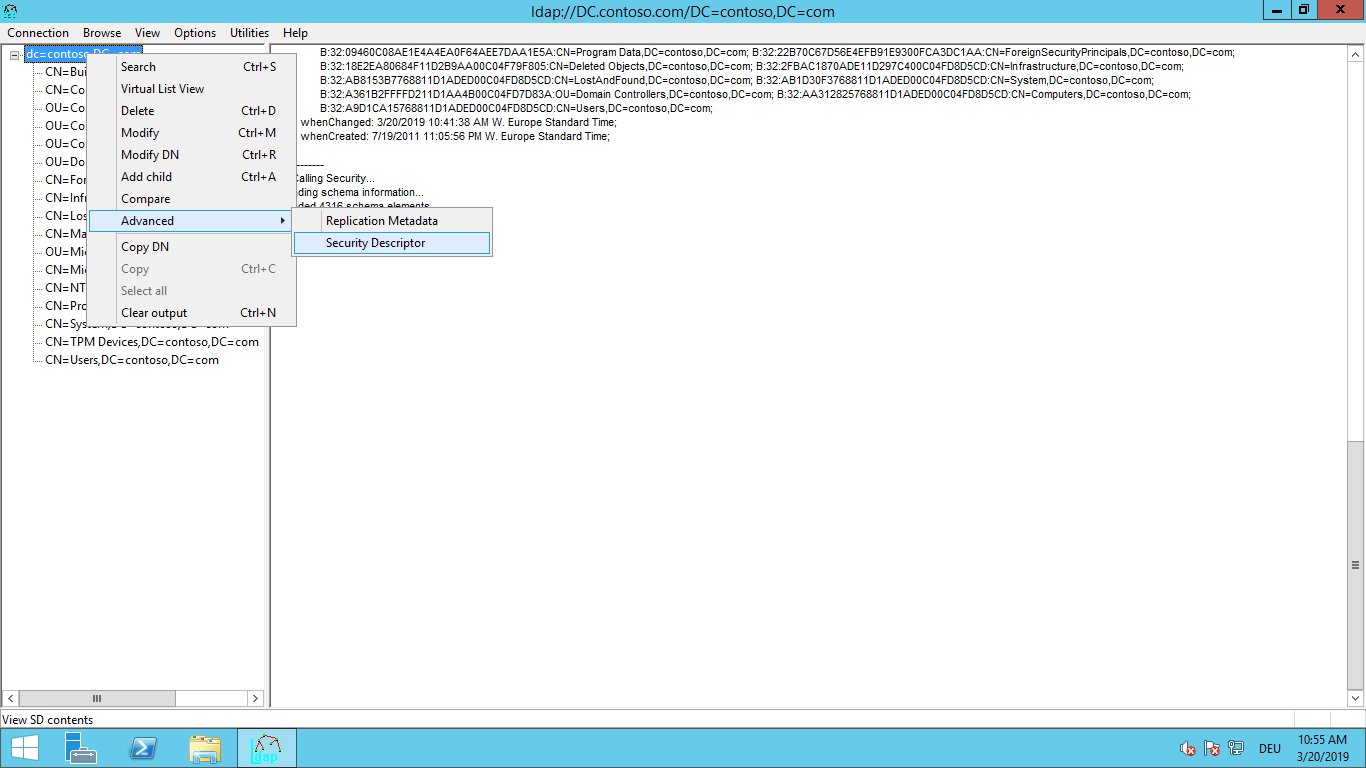Microsoft has evaluated the rights that are granted to servers that are running Exchange Server and to Exchange administrators in the identified scenarios. Microsoft has determined that it is possible to make changes that lower the permissions that are granted within an Active Directory domain. The actual permission changes will vary depending on the version of Exchange Server that is used.
The procedure in this section returns all environments to a common, reduced directory permission profile.
To resolve this issue on Exchange Server 2013 or a later version, customers should install the following cumulative update, as appropriate for their environment:
Environments in which Exchange Server 2013 or a later version is in use require the updated cumulative update package to manually execute /PrepareAD in any Active Directory forest in which Exchange Server is installed or in which the directory schema has been prepared to host servers that are running Exchange Server. Additionally, customers who employ multiple domains in a single forest will have to run /PrepareDomain in all domains in the forest to lower the permissions that are granted to Exchange Server and to Exchange administrators.
Note The /PrepareDomain operation automatically runs in the Active Directory domain in which /PrepareAD is run. However, it may not be able to update other domains in the forest. For this reason, a domain administrator should run /PrepareDomain in other domains in the forest.
For more information about the /Prepare switches that are used by Exchange Server, see Prepare Active Directory and domains for Exchange Server.
The prepare operations in these updated cumulative updates make the following changes to the Active Directory environment.
Exchange Server 2016 and later versions
The AdminSDHolder object on the domain is updated to remove the "Allow" ACE that grants the "Exchange Trusted Subsystem" group the "Write DACL" right on the "Group" inherited object types.
Exchange Server 2013 and later versions
The "Allow" Access Control Entry (ACE) that grants the "Exchange Windows Permissions" group the "Write DACL" right to the "User" and "INetOrgPerson" inherited object types is updated to include the "Inherit Only" flag on the domain root object.
Exchange Server 2010
Customers who are running Exchange Server 2010 should apply the following manual updates to their environment by using the LDP tool.
- Start the LDP tool (In the Run box, type ldp.exe, and then press Enter).
- Connect to the domain namespace that you want to update. (On the File menu, click Connect.)
- Bind to the domain namespace by using Domain Admin credentials. (On the File menu, click Bind.)
- View the tree by using the base DN that corresponds to the root of the domain context to be updated. (On the View menu, click Tree.)
For example:

- Open Domain Access Control Lists. (Right-Click domain, click Advanced, and then click Security Descriptor.)

- Find the two "Allow" ACEs that grant "Write DACL" right to the "Exchange Windows Permissions" group on the "User" and the "INetOrgPerson" inherited object types:

Note Do not sort the list. This will change the ACL order.
- Edit each entry to add the "Inherit Only" flag. To do this, double-click the object, select the flag, and then click OK.

- Verify that the operation is successful on each ACE. Then, click Update.
